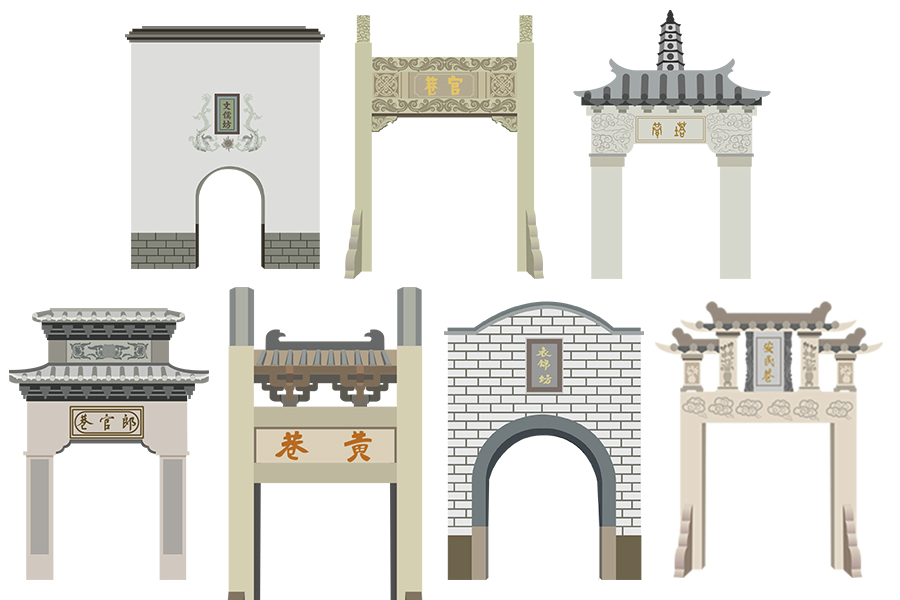Surprising encounters on streets where heritage lives on to this day
 Some of the lanes and alleys in Fuzhou's Sanfang Qixiang have a unique gate: (clockwise from top left) Wenru Lane; Gongxiang Alley; Taxiang Alley; Anmin Alley; Yijin Lane; Huangxiang Alley; and Langguan Alley. CHINA DAILY
Some of the lanes and alleys in Fuzhou's Sanfang Qixiang have a unique gate: (clockwise from top left) Wenru Lane; Gongxiang Alley; Taxiang Alley; Anmin Alley; Yijin Lane; Huangxiang Alley; and Langguan Alley. CHINA DAILY
We had to pilot our drone carefully to avoid a midair collision with a parrot.
Our film crew had already paid to fix the machine after thwacking it into the top of an archway the day before we encountered a man taking his parrot for a fly, much like others would take a dog for a walk.
As you do, I guess.
Our cameraman told him that he was worried about hitting the bird, pointing out our drone was "almost certainly more expensive "than the animal. "Impossible!" the guy replied. "The bird is definitely worth more!"
It was one of the last things I'd expected to encounter as host of a documentary exploring Fuzhou's Sanfang Qixiang (Three Lanes and Seven Alleys) neighborhood.
But, as I discovered, the 40-hectare community of roughly 200 ancient residences is home to many surprises.
I didn't anticipate that I'd use mallets to pound pork on tree stumps, or strum a sanxian (three-stringed lute with a snakeskin sound box) on a traditional opera stage, let alone befriend the relative of a man who incinerated more than 1,000 metric tons of opium 200 years ago.




